The Toilet Has Problems Such As Back Odor, Yellowing, Leaking And Slow Down. How To Solve? Here Is A Detailed Solution Strategy!
Odor, yellowing, leaking, clogging, shifting, slow water flow, unclean flushing and other problems. The process of daily use of the toilet often troubled us. When encountering these situations, consumers usually attribute it to the quality of the toilet. However, many times it is caused by improper use by consumers. How to solve these six types of problems? Here is a detailed solution strategy.

01
Reverse Odor In The Toilet
Causes.
1, improper sealing of the flange and pipe mouth of the toilet is one of the culprits of odor. During installation, the interface should be sealed with materials such as oil paste embedded in the drain in advance. If the interface is well sealed, the odor may be emitted from the floor tile.
2, the sealant at the bottom of the toilet is not applied tightly, which will cause the odor to return outside.
3、The floor tile around the toilet is not hooked, which will cause the odor to return.
4, the toilet cover is not sealed tightly, causing the odor to return.
5, see whether the water seal of the toilet is enough. Generally, a good toilet after flushing water has a certain water seal stored in to ensure the isolation of the pipe. If the water seal is destroyed, it is time to change the toilet.
6, in the installation, there is no good docking seal between the sewer pipe and the toilet outlet, so it is also easy to have the odor run out.
Solution.
1, if the floor tiles around the toilet have bulging floor tiles, you should first repair the bulging floor tiles.
2, apply a circle with glass glue to the bottom edge of the toilet to keep it sealed.
3, after going to the toilet, you should keep the toilet lid covered in time.
4, always flush the toilet bowl with water so that the stagnant water or spoiled water is not stored at the bend of the water storage.
5, use toilet bowl cleaner as an unclogging agent: after the toilet bowl has been used for a period of time, you can pour an appropriate amount of toilet bowl cleaner into the toilet bowl and cover the toilet bowl for a while. Then flush with water to keep the toilet open.
6, you can place a small cup of balsamic vinegar in the toilet, and the odor will disappear. Its validity is six or seven days and can be changed once a week. Or dry the residual tea leaves and put them into the toilet or ditch to burn and smoke, which can eliminate the bad smell.
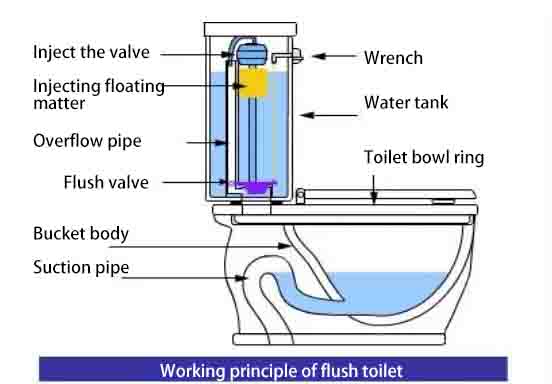
02
Toilet Bowl Yellowing
Cause.
The inside wall of the toilet bowl becomes yellow. After the toilet has been used for a long time, as the scale or urine scale gradually becomes more, the inside of the toilet will become yellow.
Solution
① Old stockings: Spray a foaming stain remover inside the toilet first, and then roll the old stockings on a stick to brush them, and you will be able to completely remove the dirt inside the toilet.
② Coke: Pour carbonated drinks such as Coke into the toilet bowl and brush it. The effect is also good.
③Vinegar: White vinegar is acidic, while the odor factor of the toilet is alkaline. When the two meet, there will be a neutralization reaction. In addition, put white vinegar in a mineral water bottle and then poke a few small holes at the bottom of the water bottle. Then place the bottle in the water tank normally. Every time you flush, the vinegar can flow out with the water. This will not only prevent the toilet wall from yellowing, but also effectively deodorize it. You can also save water by putting a bottle in the tank.
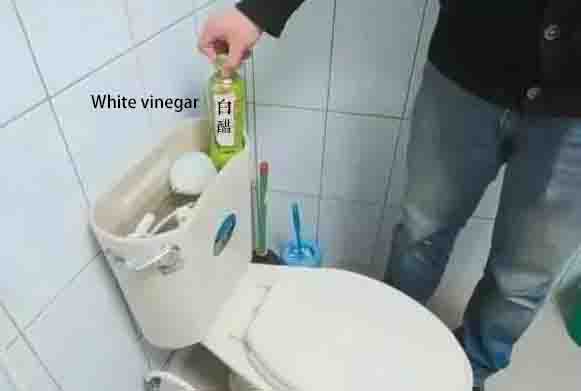
④ Use 84 disinfectants. 84 disinfectant is mainly composed of sodium hypochlorite (NaClO). Sodium hypochlorite is a strong oxidizing agent that can oxidize most substances and denature them, thus playing a disinfecting role. Sodium hypochlorite reacts chemically with carbon dioxide in the air to produce hypochlorous acid (HCIO), which is an acid and is corrosive. The main component of the limescale and urine scale is calcium carbonate (CaCO₃). Cleaning the toilet with 84 disinfectants can not only remove limescale and urine scale but also play a disinfecting role.
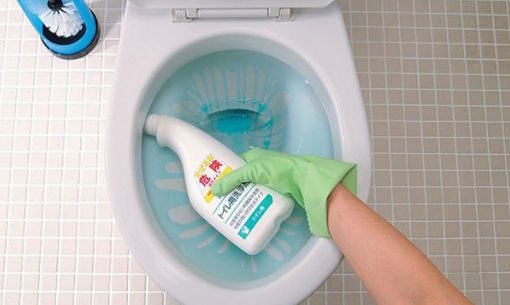
The specific cleaning operation is as follows: pour the 84 disinfectant slowly along the inner wall of the toilet bowl, and brush it with a toilet brush after half an hour, and the toilet bowl will be as bright and clean as new. Then pour some laundry detergent into the toilet. The toilet bowl will not only be shiny and clean but also have a light fragrance.
03
Toilet Leakage
Cause.
Generally speaking, there are many reasons for toilet leaks. In addition to the tank accessories in the drain valve seal is not tight, and the toilet itself is not up to the quality and other issues.
1, poor quality materials: some manufacturers are bent on reducing production costs to choose poor-quality materials. The water inlet valve outlet and the inlet pipe itself cracked during injection molding, resulting in sealing failure. The water in the tank flows into the toilet through the drain valve overflow pipe, resulting in a “long flow of water”.
2, tank accessories miniaturization: the excessive pursuit of tank accessories miniaturization, resulting in floating ball (or floating bucket) buoyancy is not enough. When the water submerged a floating ball (or floating bucket), still can not make the water inlet valve close. Water keeps flowing into the tank, and eventually, causes leakage from the overflow pipe into the toilet. Especially when the tap water pressure is high, this phenomenon is particularly obvious.

3, the tank fittings interference: the tank fittings produce interference in the action of the institutions, resulting in leakage. For example, when the water tank releases float and float rod down after the impact of the normal reset of the flap, resulting in leakage. There are leaks caused by too long float rods and too large float balls and the friction between the tank wall. This will affect the free lift of the float, resulting in seal failure and leakage.
4, the drainage valve is not sealed at the joints: non-disposable forming of the drainage valve due to poor sealing at the joints. Under the action of water pressure, water flows from the interface gap through the overflow pipe into the toilet, resulting in leakage. Free to change the height of the lift-type water inlet valve. If its seal is not closely matched with the pipe wall, water leakage will also often occur.

5, the seal ring seal is not tight: after flushing, if the water is leaking from the bottom of the toilet, and the water is not clear and has a bad smell, then basically you can tell that the seal ring on the drain at the bottom of the toilet is not sealed well. The sealant between the edge of the toilet and the ground is not sealed tightly, and the dirt flows backward when the drainage pipe is not smooth. You can first confirm whether the drainage pipe is not smooth. If it is not smooth, you have to unclog the pipe first, and then let the product seller reinstall the toilet seat. This phenomenon mostly occurs soon after the installation of the toilet.
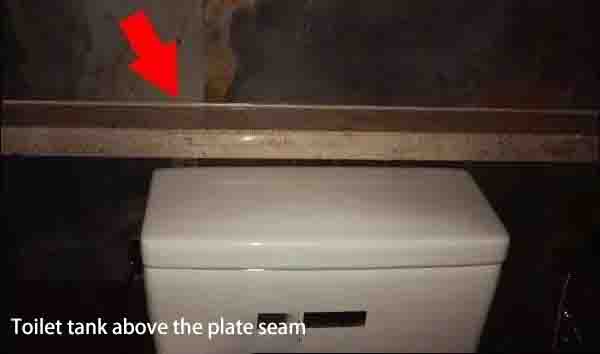
6, the toilet has cracks: If you find that there is water seepage from the surface of the toilet at any time, it is suspected that there may be cracks in the toilet. The test method is: first turn off the inlet valve, then the toilet tank of water drainage, and then with red ink or colored ink added to the residual water in the tank to stay for about 30 minutes. Observe whether any place with colored ink seepage. If there is, it can be concluded that the toilet has cracks. In this case, there is no way to repair it. The only way is to replace the toilet seat.
Solutions
1, check whether the flush switch is reset. Some flush toilets of the plastic flush switches will occasionally get stuck after a long time of wear and tear, and can not be reset. Generally, repeat the switch several times and it can be reset. Check whether the rubber gasket of the drain under the ball valve is aging and not sealed tightly. Found the problem, need to replace.
2, check whether the connection between the tank ball float and the water inlet switch is loose. Check whether the float is in place and the switch is not closed, resulting in non-stop water intake. After the water is full, flowing from the upright drain pipe, it is enough to tighten the float and water valve switch connection. If the rubber ball valve is damaged and not sealed tightly, there will be water leakage. At this point, you need to replace it immediately.
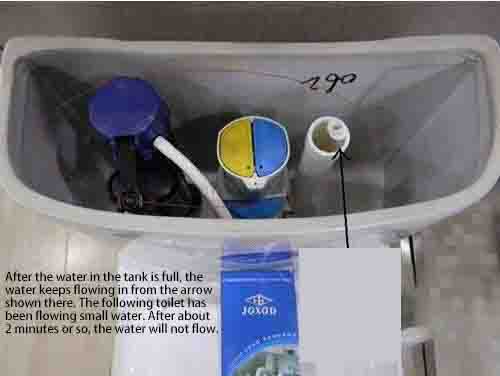
3, if there is a water leak in the tank, basically go check the drain valve. Check the situation of the water tank outlet plug. If the rubber plug of the outlet is broken or blocked by a foreign object causing the plug to be blocked, it will also cause the toilet to keep flowing. If the water tank is not correctly placed in the replenishment tube, more or less will also have an impact.
Warm tip: If the interface between the toilet’s pumping mouth and the downpipe is cracked and leaking, it is best not to repair it by yourself, and it is recommended to ask a professional plumber to repair it.
04
Toilet Blockage
Slight Blockage Of Toilet.
Slight toilet clogging is usually caused by toilet paper or sanitary napkins, towel rags and another toilet clogging. This kind of blockage can be unblocked by directly using a pipe unblocking machine or a simple unblocking tool.
Solutions.
1, caustic soda, oxalic acid: many times more flush the toilet, they will pass. Especially if the toilet is clogged by soluble or breakable items such as dirt or paper, then flush a pot of boiling water down to dissolve it. Or buy some caustic soda and boil water to melt it. Pour them into the toilet and it will pass after ten minutes. Or use the right amount of oxalic acid to unclog the toilet (you can usually use oxalic acid to clean the toilet. Their chemical composition is just neutralized with urine alkali to make the toilet unblocked).
2, wire: make a hook with wire, and then stick it into the sewer mouth inside the stirring, so that the dirt is wrapped around the wire. Then yank out the wire to drag the dirt out of the sewer mouth. Or find a half-inch-wide bamboo strip to reach into the toilet to unclog.
3, mop, plunger: fill the toilet half of the water, and use a round mop or round-headed soft brush against the hole in the sewer pounding. You can also use that old-fashioned mopping pad. After filling the toilet halfway with water, use the mop to press hard into the hole a few times. The action should be fast, and the pressure should get it through. Or go to the market to buy a plunger, and then a few hard tucks. Use it once in half a month, so the toilet will not be blocked.
4, drink bottles: use drink bottles to unclog. Cut off the bottom of the big Coke bottle mouth after drinking. Then put it upside down in the toilet and hold the bottom with your hand to pump up a few times.
5, Air cylinder: Wrap a rag around the cylinder and pour some water into it. Start pumping, the toilet will be unclogged in a while.
6, Hose: Find a section of the hose. Connect one end of it to the tap water, wrap a rag around the other end and insert it into the sewer pipe, then turn on the tap water and you’re done. The principle is that the pressure of the tap water is about 4Mpa, which can completely flush the sewer. Remember not to let the hose leak at both ends to maintain the highest pressure.
7, the toilet apparatus: use the toilet apparatus. This is a tool invented specifically for blocked pipes to unclog. The front end of the toilet passer is a flexible spring. The length of the spring is determined by the height of the blockage from the toilet opening. After tightening the screw, force the spring into the pipe until it is unclogged or the dirt is removed.
8, Pipe unclogging agent: Use pipe unclogging agent. This is a kind of powder unclogging product that can be used for any pipe unclogging. Put the unclogging agent in three separate amounts. Each time about 50 grams, interval 1-3 minutes. After all of them are put in and left for three minutes, then flush with hot water. Finally, leave it for 10 minutes before rinsing with water. After this operation, it should be able to play the role of toilet unclogging.
Toilet blockage by hard objects.
When using, accidentally drop in plastic brushes, bottle caps, soap, combs and other hard objects.
Solution.
For this kind of minor blockage, you can just use a pipe unclogger or a simple unclogger to unclog it directly. If the toilet is seriously clogged, you have to disassemble the toilet to unclog it. The only way to completely solve this situation is to get something out.

Toilet aging blockage.
Toilets are used for a long time and inevitably scale will be formed on the inner wall. In serious cases, they will block the outlet hole of the toilet and cause the toilet to drain slowly.
Solution.
Find the ventilation hole and scrape the dirt to make the toilet water flow smoothly.
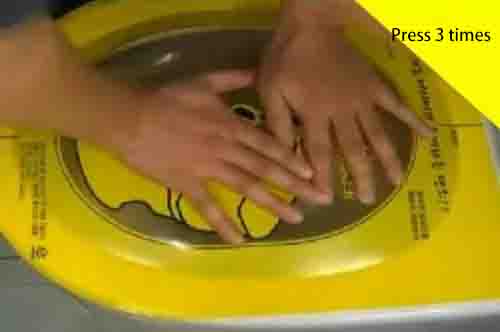
05
Toilet Bowl Shift
Cause.
Usually, in the renovation, the bathroom is usually reserved for the sewage port and then go to install the toilet. However, there will be two cases of mismatch, so the toilet had to be relocated. However, the toilet relocation not only involves the sewerage and waterproofing changes, but also involves the downstairs tenants. If the modification is not good, this may cause poor drainage, which is more troublesome.
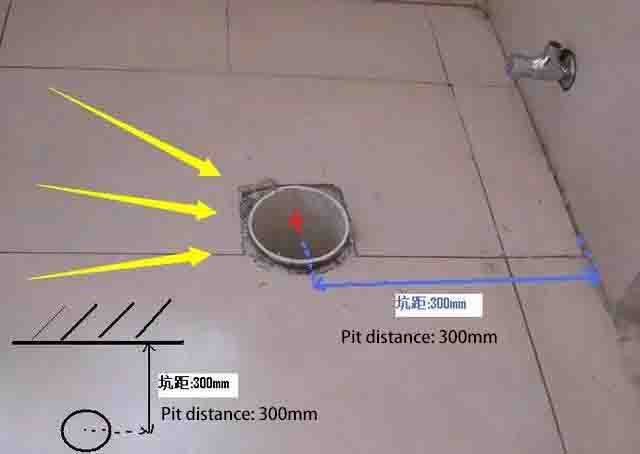
Solution
1, because the toilet pit distance is not appropriate, you need to adjust the toilet position. This is the most common problem. General pit distance is within 10CM to move, so you can use the toilet shifters to solve the problem. But the disadvantage is not handled well and easy to block later, therefore you can not move.
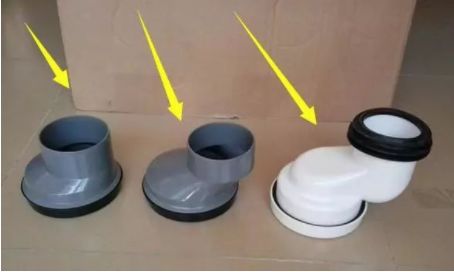
2, discussion with the downstairs tenants about changing the location of the sewer pipe. Generally, the top of the downstairs will do a big elbow. In this case, it will not be as easy to block the toilet shifter. But after changing the location of the downpipe, be sure to do a good job waterproofing, and do a watertight test to ensure that there will be no leaks. In general, it is also suitable for small distance changes. The premise of this method is that it is easier to implement only if the downstairs has not been renovated.

3、Change the wall-mounted toilet to wall-drain type. This is a relatively good program, and the wall-mounted toilet looks more upscale. But relatively speaking, the wall-hung toilet is generally more expensive.
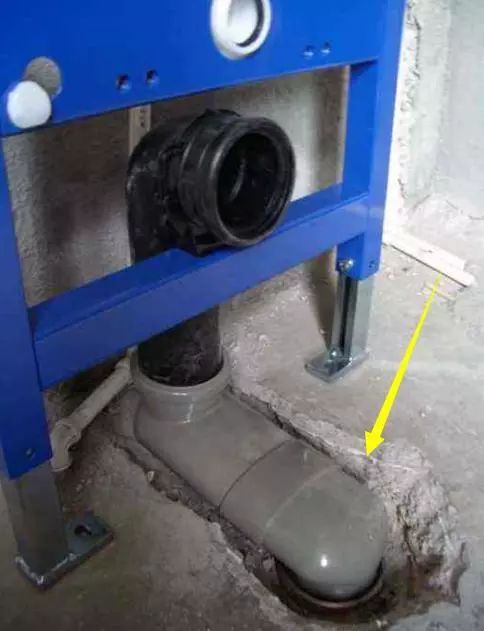
06
Toilet Water Is Slow, Not Clean Flush
Reason One.
During installation, the flange interface is installed on the wrong side, resulting in a reduction in the flow of water downstream.
Solution
1, when buying a toilet: be sure to pay attention. The general water tank to the tile water pipe is about 30 ~ 35cm. they are 110cm in diameter.
2, in the installation of the toilet: supervise the whole process. Be sure that there is no mistake in the installation position and way. Otherwise, if the subsequent problems, you have to tear down and re-install.
3, after the installation of the toilet: do not immediately test the water. If you test the water immediately, the cement at the bottom will be washed away, resulting in unstable toilets, as well as water leakage from the bottom. Do not immediately use, it because the bottom cement is not dry.
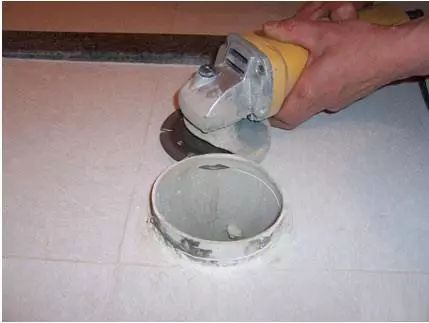
Reason two.
The toilet itself does not have enough pumping power and insufficient water pressure.
Solution
1、You can increase the water volume, such as putting bottles in the water tank.
2、Adjust the screw of the water inlet valve clockwise to let the water level rise. Note that the water should be at least 10mm away from the overflow orifice of the drain valve.
3, properly adjust the water level of the tank. The flush is not strong, and the water goes down slowly, which can only mean that the downpipe is a little blocked. You just need to unclog the next. If the flow is slow from the tank to the toilet, check whether there is something blocking the toilet tank to the flush outlet.
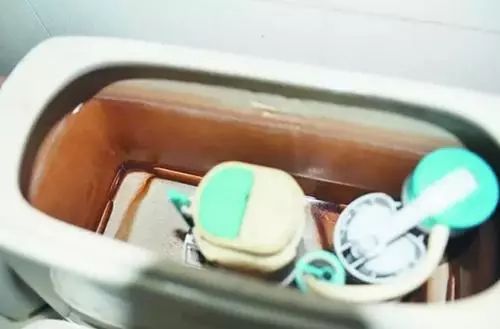
Reason Three.
Insufficient flushing water, there are problems such as water stops.
Solutions.
1, if the amount of water is not enough, you can take down the tank cover to adjust the amount of water. There are two plastic rods under the toilet release button. There is a cork on the top to adjust the length of the plastic rod to control the amount of water.
2, if still cannot, you can only change the toilet. You can choose the siphon toilet, so the effect is good.

Reason Four.
After a long period of use, this will lead to the inner measurement of the downpipe stained with dirt, and the downpipe thus becomes smaller.
Solution.
You can take down the downpipe, put it into the acid to eliminate the accumulated dirt, and then install it. In this way, the water will flow much faster. If there is a soft object blocked, you can use a soft spiral pass. If it is something hard, it is best to find a professional company to solve it.
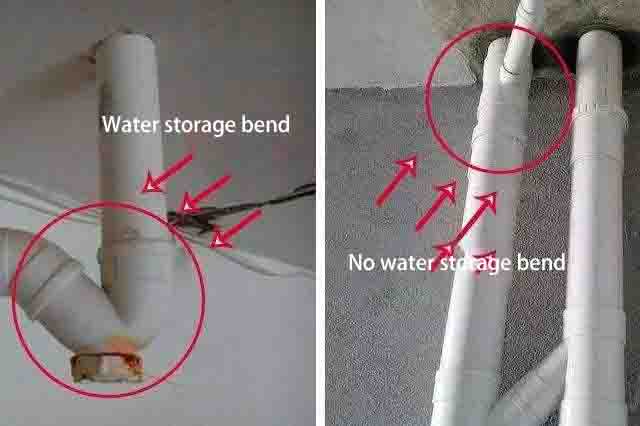
In the process of use, the toilet appears various phenomena, and the owner’s anxiety is understandable. After all, most owners have worked hard for half a lifetime to buy this house. But many times when the toilet has a reverse odor, yellowing, leaking, clogging, shifting, slow down, flushing and other problems, it’s really not a toilet quality problem!
 WOWOW Faucets
WOWOW Faucets





您好!Please sign in